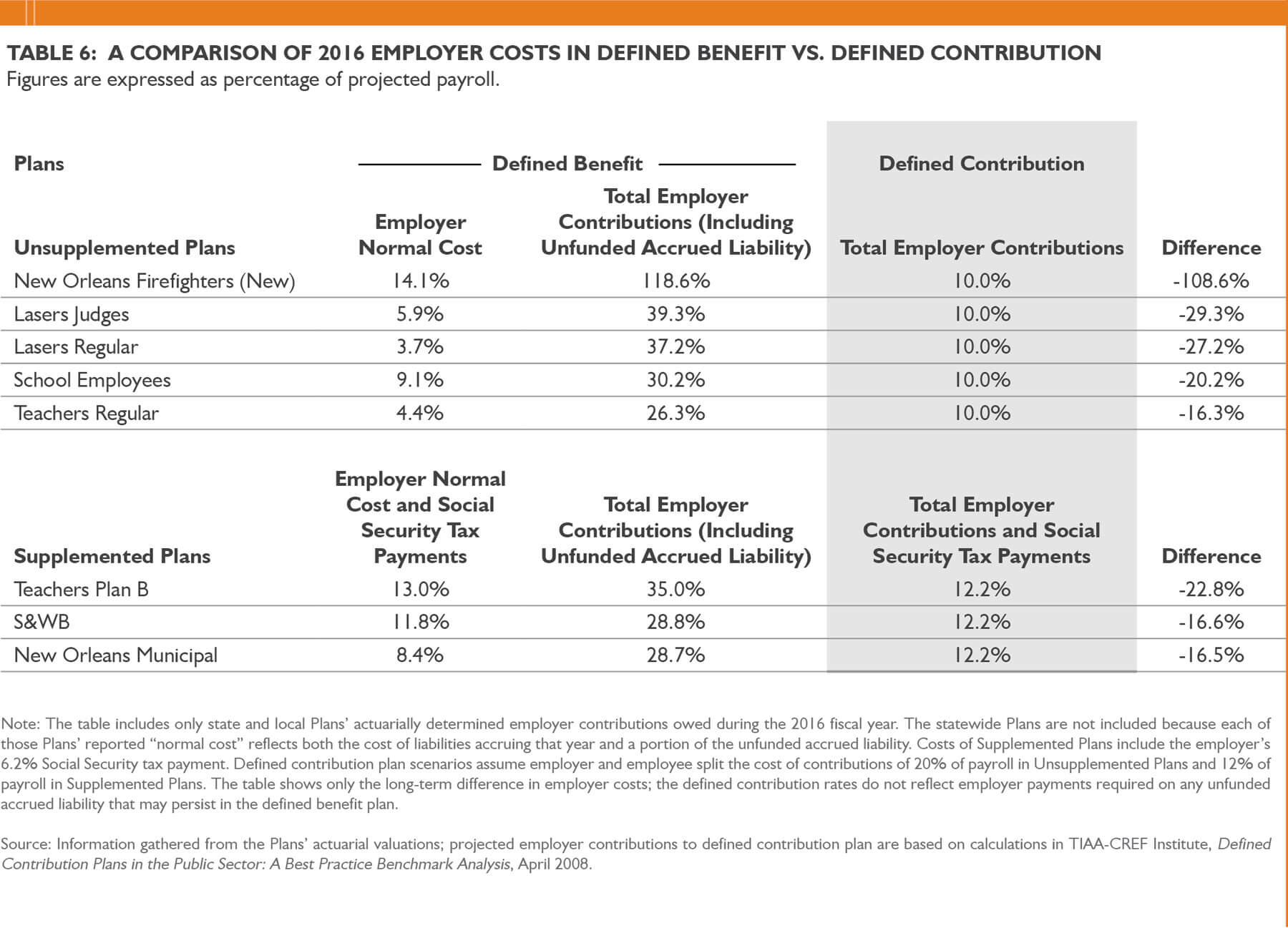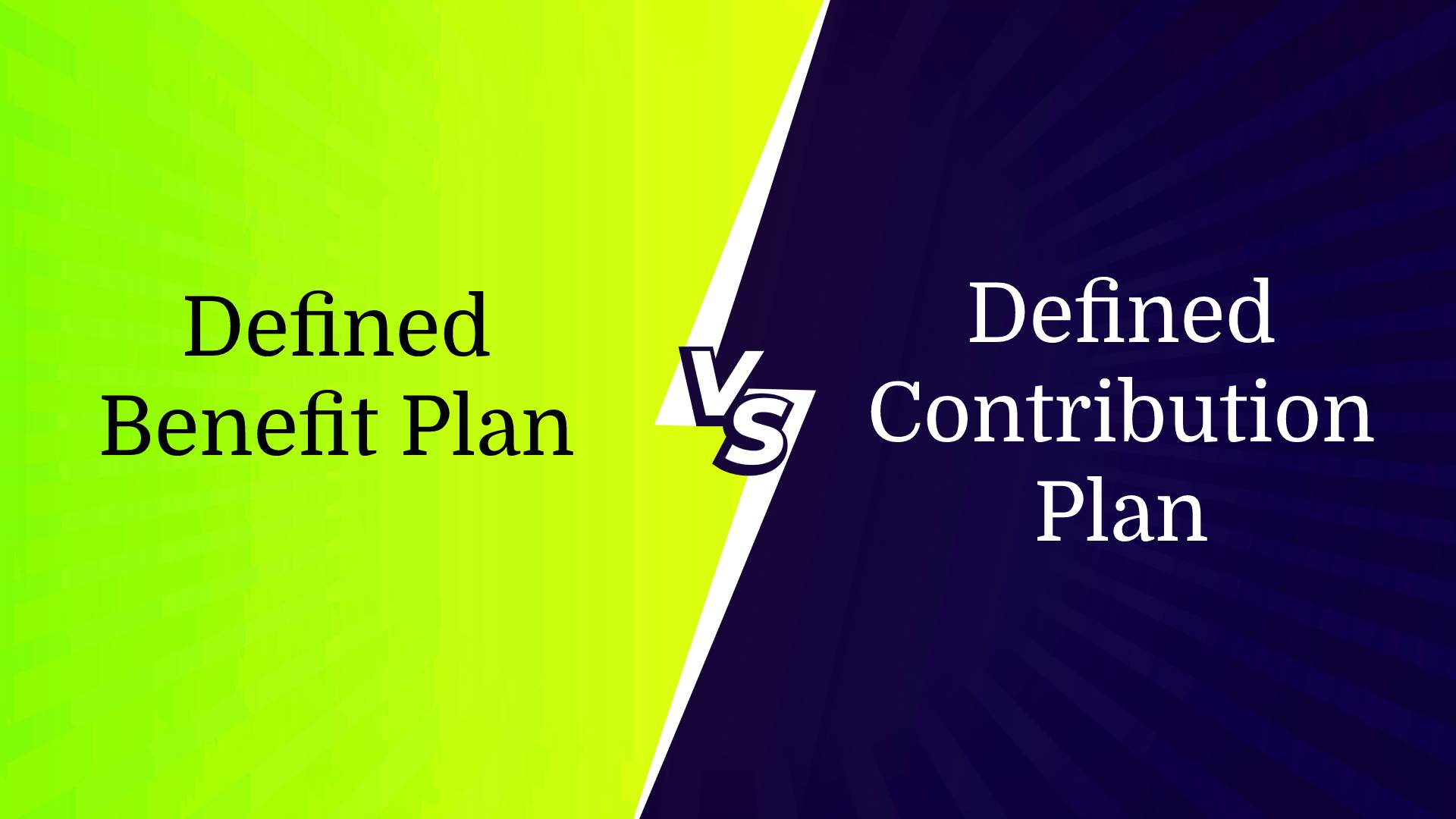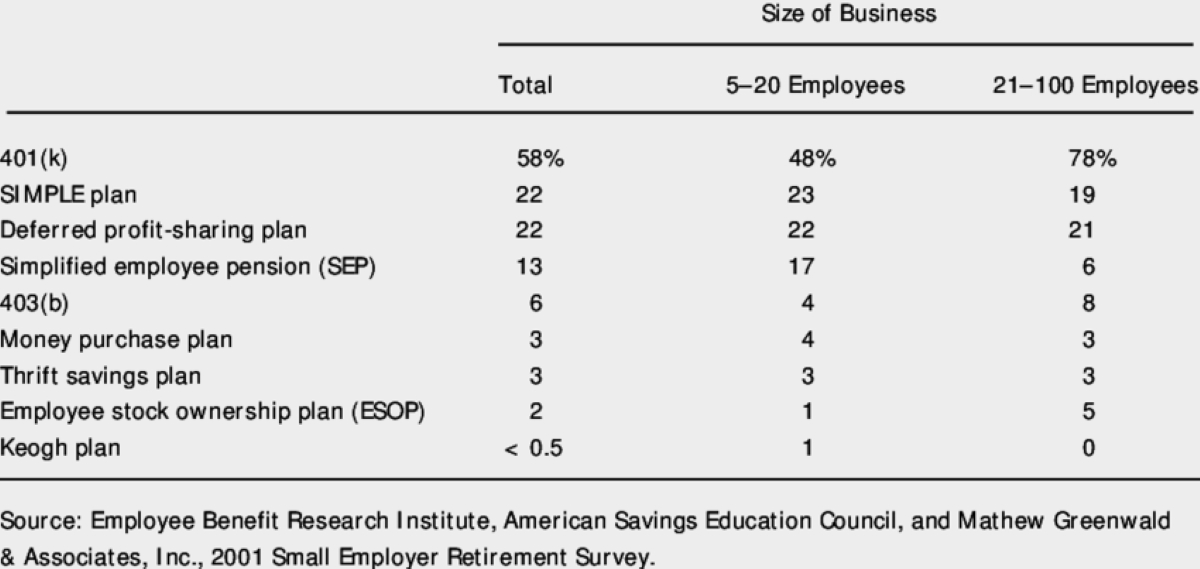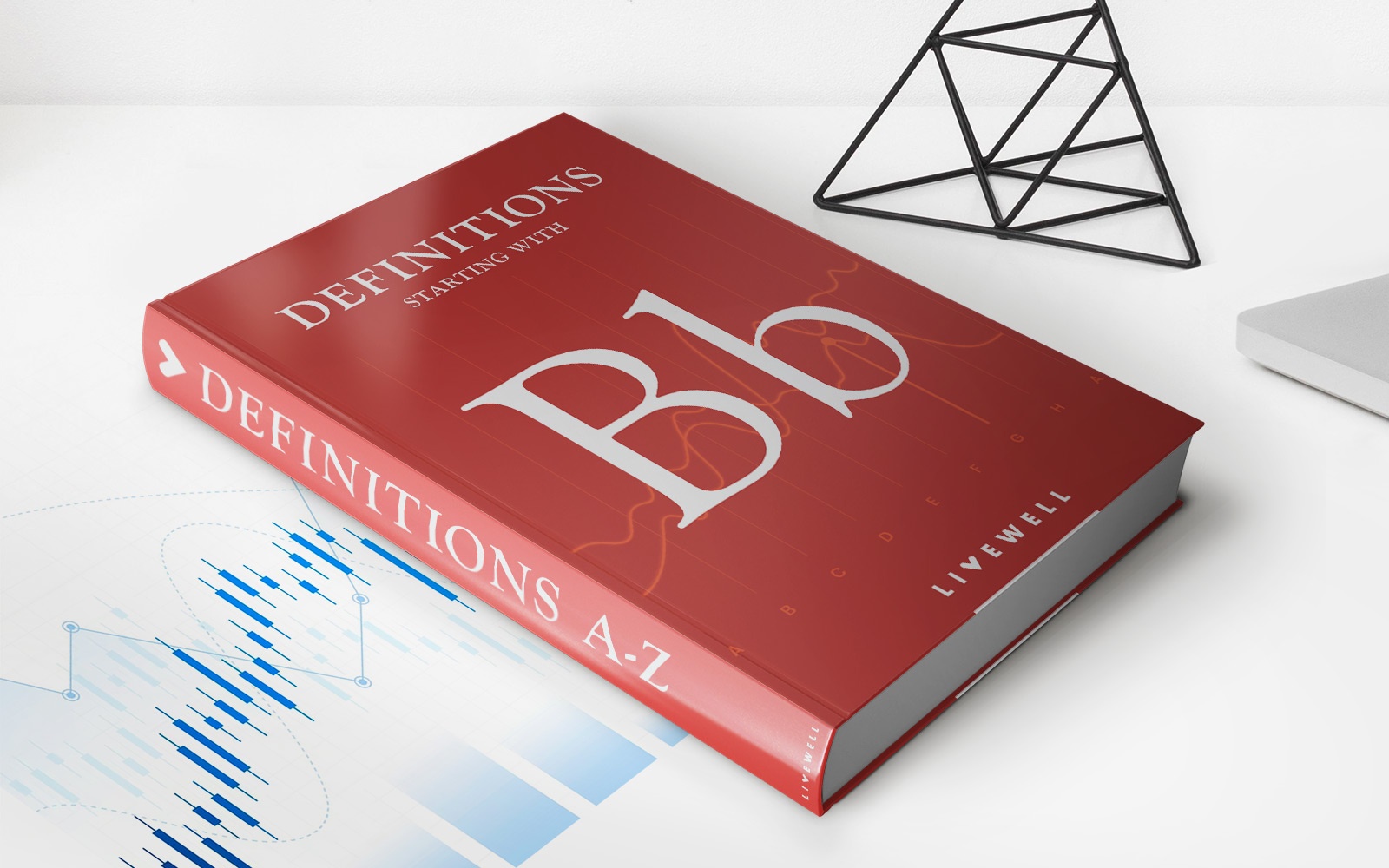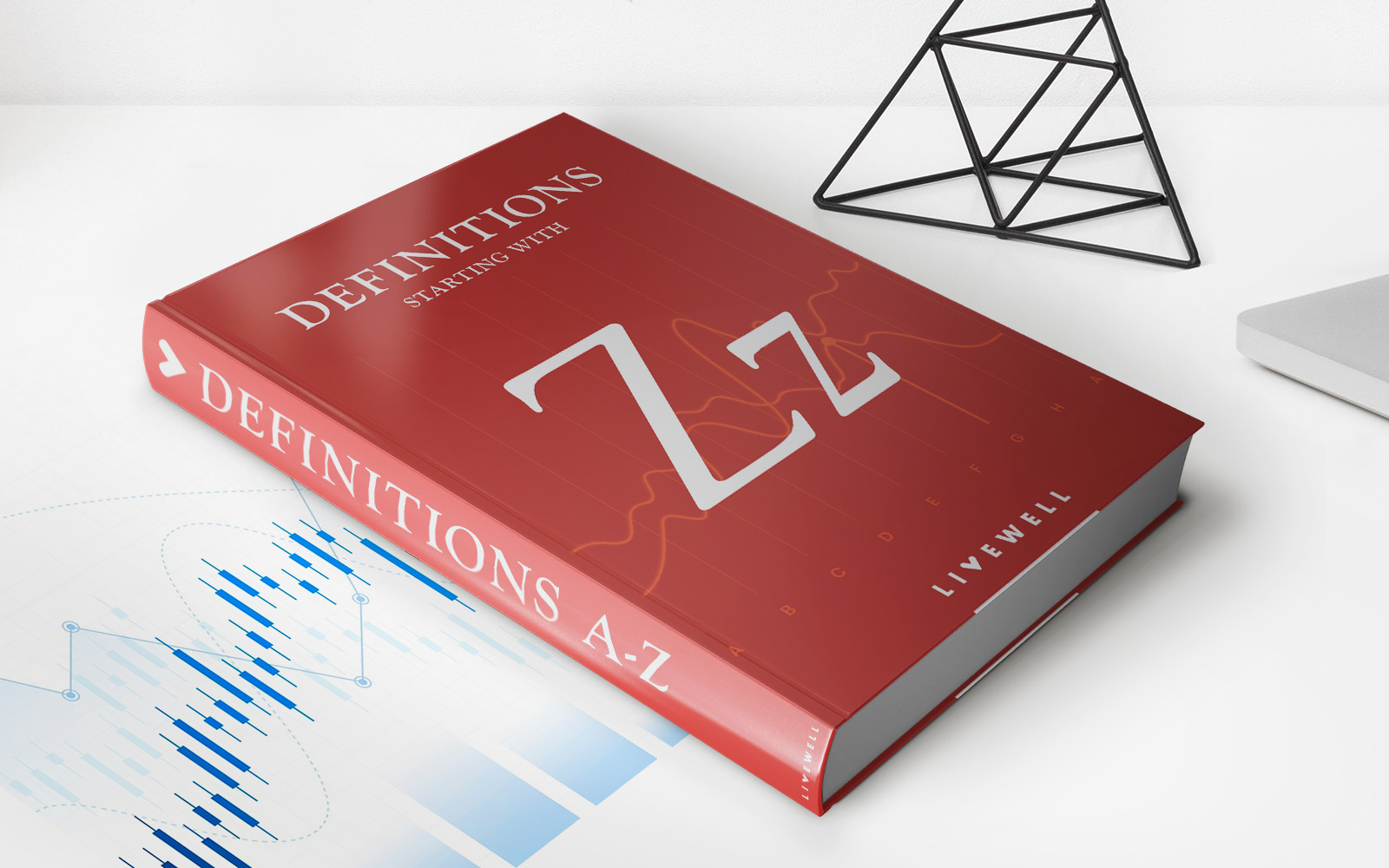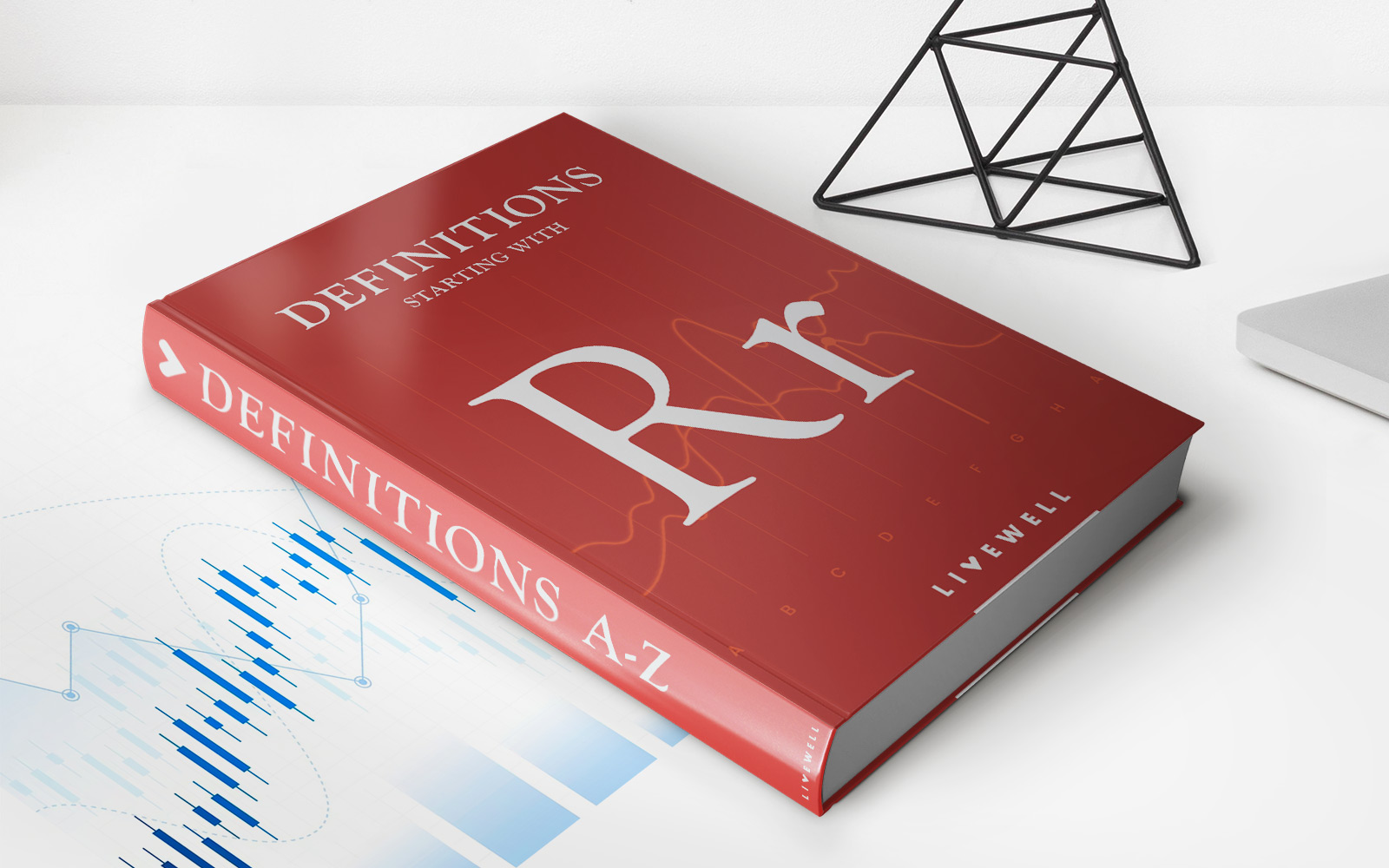Home>Finance>How Do You Treat Defined Contribution Plans In An S Corporation For Employees


Finance
How Do You Treat Defined Contribution Plans In An S Corporation For Employees
Published: January 2, 2024
Discover the best practices and strategies for managing defined contribution plans in an S corporation for employees. Get expert financial advice and make informed decisions.
(Many of the links in this article redirect to a specific reviewed product. Your purchase of these products through affiliate links helps to generate commission for LiveWell, at no extra cost. Learn more)
Table of Contents
- Introduction
- Understanding Defined Contribution Plans
- Types of Defined Contribution Plans
- Benefits of Offering Defined Contribution Plans in an S Corporation
- Considerations for Employees in an S Corporation
- Treating Defined Contribution Plans in an S Corporation
- Contribution Limits and Rules
- Tax Implications for Employees
- Reporting Requirements for S Corporations
- Conclusion
Introduction
When it comes to employee benefits, defined contribution plans play a crucial role in providing financial security for employees. In an S Corporation, these plans are treated differently compared to other types of corporations. Understanding how defined contribution plans are treated in an S Corporation is vital for both employers and employees.
Defined contribution plans are retirement savings plans in which employers make contributions to an employee’s account based on a percentage of the employee’s salary or a fixed dollar amount. The contributions made to these plans are typically tax-deductible for the employer, and the growth of the funds within the plan is tax-deferred until the employee makes withdrawals during retirement.
S Corporations, also known as S Corps, are a popular choice for small businesses as they offer certain tax advantages. S Corps are pass-through entities, meaning that the corporation’s income or losses are passed through to the shareholders’ personal tax returns. This unique tax treatment requires careful consideration when setting up and managing defined contribution plans within an S Corporation.
In this article, we will explore the different types of defined contribution plans, the benefits of offering these plans in an S Corporation, and the considerations both employers and employees need to keep in mind. We will also delve into the specific rules and contribution limits that apply to defined contribution plans in an S Corporation, as well as the tax implications and reporting requirements for employees and the corporation.
By gaining a comprehensive understanding of how defined contribution plans are treated in an S Corporation, employers can attract and retain top talent and employees can maximize their retirement savings while enjoying tax advantages. So, let’s dive in and explore the ins and outs of treating defined contribution plans in an S Corporation.
Understanding Defined Contribution Plans
Defined contribution plans are a type of retirement savings plan that are based on the contributions made by both employers and employees. Unlike defined benefit plans, which provide a fixed amount of income in retirement, defined contribution plans focus on contributions made over the course of an employee’s working years, along with the investment performance of those contributions.
In a defined contribution plan, employers determine the contribution amount and employees have the flexibility to make additional contributions if allowed. The contributions are invested and accumulate over time, ultimately determining the amount of retirement income an employee will have.
One of the key advantages of defined contribution plans is the portability they offer. When employees leave a company, they can typically roll over their contributions and the growth of those contributions into a new retirement account, such as an Individual Retirement Account (IRA) or a new employer’s retirement plan.
Another important aspect of defined contribution plans is the ability for employees to choose the investment options for their contributions. Plans usually offer a range of investment options, such as mutual funds or target-date funds, allowing employees to customize their investment strategy based on their risk tolerance and financial goals.
Employers may choose to match a portion of an employee’s contributions as part of their defined contribution plan. Matching contributions incentivize employees to save for retirement and can significantly boost their retirement savings over time. The specific matching formula and contribution limits vary depending on the plan and the employer’s discretion.
Understanding the basics of defined contribution plans is essential for both employers and employees. Employers must consider the costs and administrative responsibilities associated with offering these plans, while employees need to be aware of the benefits and choices available to them when planning for their retirement.
Next, let’s take a closer look at the different types of defined contribution plans that can be offered in an S Corporation.
Types of Defined Contribution Plans
There are several types of defined contribution plans that can be offered in an S Corporation. Each plan has its own features and benefits, allowing employers to choose the one that best suits their business needs and employee demographics. Let’s explore some of the popular options:
- 401(k) Plans: 401(k) plans are one of the most well-known defined contribution plans. They allow employees to make pre-tax contributions from their salary, up to a certain limit set by the IRS. Employers can also make matching contributions, further incentivizing employees to save for retirement. One advantage of 401(k) plans is the ability to offer a Roth option, where employees contribute after-tax dollars, but enjoy tax-free withdrawals in retirement.
- 403(b) Plans: 403(b) plans are similar to 401(k) plans but are specifically designed for employees of public schools, colleges, and certain tax-exempt organizations. These plans also offer pre-tax contributions and potential employer matching contributions. Contributions and earnings within the plan grow tax-deferred until withdrawal.
- SIMPLE IRA: A Savings Incentive Match Plan for Employees (SIMPLE) IRA is a retirement savings plan available to small businesses with 100 or fewer employees. It allows both employers and employees to make contributions. Employers can choose to match employee contributions up to a certain percentage or make non-elective contributions. The administrative requirements for SIMPLE IRAs are generally less burdensome compared to other plans.
- Solo 401(k) Plans: Solo 401(k) plans are designed for self-employed individuals or business owners with no employees other than a spouse. These plans offer higher contribution limits compared to traditional 401(k) plans and allow for both employee deferrals and employer contributions. They can provide significant retirement savings opportunities for small business owners.
These are just a few examples of the defined contribution plans that can be offered in an S Corporation. Employers should carefully consider the features, costs, and administrative requirements of each plan before determining which one to implement. Consulting with a financial advisor or retirement plan specialist can help business owners make informed decisions about the best defined contribution plan for their S Corporation.
Now that we have explored the types of defined contribution plans available, let’s move on to the benefits of offering these plans in an S Corporation.
Benefits of Offering Defined Contribution Plans in an S Corporation
Offering defined contribution plans in an S Corporation can bring several benefits for both employers and employees. Let’s take a closer look at some of the advantages of implementing these plans:
- Attracting and Retaining Employees: Providing defined contribution plans can be an attractive feature for potential employees. It shows that the company values their financial well-being and offers a means for them to save for retirement. As retirement benefits become increasingly important to job seekers, offering these plans can help businesses stand out in a competitive job market and retain valuable talent.
- Tax Advantages: Contributions made to defined contribution plans are typically tax-deductible for employers. This means that the company can reduce its taxable income by making contributions on behalf of employees. Additionally, the growth of the funds within the plan is tax-deferred, allowing employees to potentially accumulate more savings over time.
- Employee Empowerment: Defined contribution plans provide employees with a sense of empowerment and control over their retirement savings. They can choose their contribution amounts and customize their investment strategies based on their individual goals and risk tolerance. This level of involvement in their financial future can help employees feel more engaged and motivated in their work.
- Portable Retirement Savings: If an employee leaves the company, they can typically take their contributions and the growth of those contributions with them by rolling them over into another retirement account. This portability provides employees with flexibility and the ability to continue growing their retirement savings, even if they change jobs.
- Contribution Matching: Many defined contribution plans allow for employer matching contributions. Matching contributions can serve as a powerful incentive for employees to participate in the plan and maximize their savings. It also demonstrates the company’s commitment to helping employees build a solid retirement nest egg.
These are just a few of the benefits that offering defined contribution plans can bring to an S Corporation. By providing retirement savings opportunities and tax advantages, businesses can contribute to the financial well-being and future security of their employees, resulting in a more satisfied and loyal workforce.
Now, let’s explore the considerations that employees in an S Corporation should keep in mind when participating in a defined contribution plan.
Considerations for Employees in an S Corporation
Employees in an S Corporation who participate in a defined contribution plan should be aware of certain considerations to make the most of their retirement savings. Let’s explore some key factors employees should keep in mind:
- Contribution Limits: It’s important for employees to understand the contribution limits set by the IRS for the specific type of defined contribution plan offered by their S Corporation. Exceeding these limits can result in tax penalties, so employees should ensure they contribute within the allowable limits.
- Matching Contributions: If the S Corporation offers matching contributions, employees should take advantage of this benefit by contributing at least enough to receive the maximum match. Matching contributions effectively increase an employee’s retirement savings, providing a valuable opportunity to grow their nest egg.
- Investment Options: Employees should carefully consider the investment options available within their defined contribution plan. Choosing the right mix of investments based on their risk tolerance, timeline to retirement, and financial goals can help maximize their long-term returns. Consulting with a financial advisor can provide valuable guidance in making informed investment choices.
- Portability: Should an employee leave the S Corporation, they should understand their options for managing their retirement savings. This may involve rolling over their contributions and the growth of those contributions into a new retirement account, such as an IRA or a plan offered by a new employer. Understanding the portability of their retirement savings ensures that employees can continue to grow their funds and maintain control over their future financial security.
- Tax Implications: Employees should be aware of the tax implications associated with participating in a defined contribution plan. Contributions made to traditional 401(k) plans are typically tax-deductible, reducing an employee’s taxable income. However, withdrawals during retirement are subject to income tax. In contrast, contributions made to Roth 401(k) plans are made with after-tax dollars, but qualified withdrawals in retirement are tax-free. Understanding the tax advantages and implications of the chosen plan can help employees make informed decisions about their retirement savings.
By considering these factors, employees in an S Corporation can make educated choices about their participation in a defined contribution plan. Taking full advantage of the benefits offered and being knowledgeable about the rules and options available will help employees build a secure and comfortable retirement.
Next, let’s delve into the treatment of defined contribution plans in an S Corporation and the rules and regulations that apply.
Treating Defined Contribution Plans in an S Corporation
When it comes to S Corporations, the treatment of defined contribution plans is influenced by specific rules and regulations. It’s important for employers and employees to understand how these plans are treated to ensure compliance and maximize the benefits. Let’s explore the key aspects of treating defined contribution plans in an S Corporation:
- Plan Design: Employers in an S Corporation have the flexibility to design their defined contribution plan according to their specific needs and goals. This includes determining contribution amounts, eligibility requirements, and vesting schedules. However, it’s crucial that the plan design adheres to the guidelines set by the IRS to maintain the tax-favored status of the plan.
- Eligibility: Employers have the discretion to set eligibility requirements for employees to participate in the defined contribution plan. Typically, eligibility is based on factors such as length of service or the number of hours worked. It’s important for employers to clearly communicate the eligibility criteria to employees and ensure consistency in applying these requirements.
- Contribution Limits: The IRS sets annual contribution limits for defined contribution plans, including 401(k) plans and SIMPLE IRAs. Employers must ensure that employee and employer contributions do not exceed these limits. Excess contributions may result in penalties and tax consequences for both the employer and employee.
- Salary Deferrals: Employees in an S Corporation can make salary deferrals to their defined contribution plan, which are deducted from their taxable income. It’s essential to properly withhold and report these salary deferrals to ensure compliance with tax regulations.
- Reporting Requirements: S Corporations are required to file Form 5500 annually if they have 100 or more participants in the defined contribution plan. However, smaller plans may be eligible for simplified reporting requirements. Compliance with reporting obligations is crucial to avoid penalties and maintain the plan’s tax-qualified status.
- Testing and Nondiscrimination: Defined contribution plans in an S Corporation must pass certain nondiscrimination tests to ensure that benefits are not disproportionately tilted towards highly compensated employees. These tests, such as the Actual Deferral Percentage (ADP) and Actual Contribution Percentage (ACP) tests, aim to ensure that the plan does not unfairly favor key employees over non-key employees.
Understanding the treatment of defined contribution plans in an S Corporation is essential for employers and employees to comply with the relevant regulations and maximize the benefits of the plan. Seeking the guidance of retirement plan specialists or human resources professionals can help navigate the intricacies of plan design, eligibility, contribution limits, and reporting requirements.
Now, let’s explore the specific contribution limits and rules that apply to defined contribution plans in an S Corporation.
Contribution Limits and Rules
Defined contribution plans in an S Corporation are subject to specific contribution limits and rules set by the IRS. Understanding these limits and rules is crucial to ensure compliance and make the most of the benefits offered. Let’s explore the key contribution limits and rules that apply to defined contribution plans:
- Employee Salary Deferral Limits: The IRS sets annual limits on the amount that employees can defer from their salary into their defined contribution plan, such as a 401(k) or SIMPLE IRA. For 2021, the limit is $19,500 for individuals under 50 years old. Employees who are 50 years old or older can make additional catch-up contributions, which for 2021 is an extra $6,500. It’s important for employees to monitor their contributions to ensure they do not exceed these limits.
- Employer Matching Contributions: Employers in an S Corporation can choose to make matching contributions to the defined contribution plan. The matching formula and limits are determined by the employer and specified in the plan document. Employers must ensure that their matching contributions do not exceed the maximum limits set by the IRS, which for 2021 is the lesser of 100% of the employee’s compensation or $58,000.
- Annual Additions Limit: The IRS imposes an annual additions limit, which includes both employee and employer contributions, as well as any forfeitures. For 2021, the limit is the lesser of 100% of the employee’s compensation or $58,000. Contributions that exceed this limit may result in tax implications and potential penalties.
- Top-Heavy Rules: Defined contribution plans must adhere to top-heavy rules to ensure that the plan does not disproportionately benefit key employees. According to the IRS, a plan is considered top-heavy if the total value of the plan accounts for more than 60% of the aggregate value of all plan accounts and the plan benefits key employees. Additional minimum contribution and vesting requirements may apply in top-heavy plans.
- Timing of Contributions: Employers must make contributions to the defined contribution plan within the specified timeframes outlined in the plan document. Failure to timely deposit contributions may result in penalties and corrections. It’s important for employers to establish a clear process for making contributions and ensure they are made in accordance with the plan’s requirements.
Employers and employees should familiarize themselves with these contribution limits and rules to ensure proper management of the defined contribution plan. Working with a knowledgeable retirement plan administrator or financial advisor can provide guidance on staying compliant and leveraging the advantages of the plan.
Next, let’s explore the tax implications for employees who participate in a defined contribution plan within an S Corporation.
Tax Implications for Employees
Participating in a defined contribution plan within an S Corporation has significant tax implications for employees. Understanding these implications can help employees make informed decisions and optimize their retirement savings. Let’s explore the key tax considerations:
- Pre-Tax Contributions: One of the primary benefits of participating in a defined contribution plan is the ability to make pre-tax contributions. These contributions are deducted from an employee’s taxable income, reducing their overall tax liability for the year. By deferring taxes on their contributions, employees have the opportunity to grow their retirement savings with potentially higher take-home pay.
- Roth Contributions: Some defined contribution plans, such as Roth 401(k) plans, offer the option for employees to make after-tax contributions. While these contributions do not provide an immediate tax deduction, qualified withdrawals in retirement are tax-free. Choosing between pre-tax and Roth contributions depends on factors such as current tax rates, expected tax rates in retirement, and individual financial goals.
- Tax-Deferred Growth: Within a defined contribution plan, investments grow on a tax-deferred basis. This means that employees do not pay taxes on the earnings or capital gains within the plan until they make withdrawals during retirement. Tax deferral allows for potential compound growth over time, as more money remains within the plan to grow. It’s important to note that withdrawals from the plan are subject to ordinary income tax.
- Withdrawals in Retirement: When employees retire and begin withdrawing funds from their defined contribution plan, the withdrawals are treated as ordinary income and are subject to income tax. The tax rate applied to the withdrawals depends on the individual’s tax bracket during retirement. Strategic planning around withdrawal timing and amounts can help minimize the tax impact.
- Required Minimum Distributions (RMDs): Starting in the year employees turn 72 (or 70 ½ for those who reached 70 ½ before January 1, 2020), they are required to take minimum distributions from their defined contribution plan. RMDs are taxable and must be calculated based on the account balance and life expectancy. Failing to take RMDs can result in significant tax penalties.
It’s important for employees to consult with tax professionals or financial advisors to understand the specific tax implications of participating in a defined contribution plan within an S Corporation. By considering their individual circumstances, employees can make strategic decisions to minimize tax liability and optimize their retirement savings.
Now, let’s explore the reporting requirements that S Corporations face in relation to defined contribution plans.
Reporting Requirements for S Corporations
When it comes to defined contribution plans, S Corporations have specific reporting requirements that they must fulfill to maintain compliance with regulatory authorities. These reporting obligations help ensure transparency and proper administration of the plan. Let’s explore the key reporting requirements for S Corporations:
- Form 5500: If an S Corporation has more than 100 participants in their defined contribution plan, they are generally required to file Form 5500 annually with the Department of Labor (DOL) and the Internal Revenue Service (IRS). This form provides details on the plan’s financial information, participant data, investments, and other relevant information. The filing deadline for Form 5500 is typically the last day of the 7th month after the end of the plan year, but extensions may be available.
- Summary Annual Report (SAR): S Corporations must provide participants with a summary of the plan’s annual financial report, known as the Summary Annual Report (SAR). The SAR highlights the plan’s financial activities, including contributions, distributions, and expenses. Employees must receive the SAR within nine months after the end of the plan year.
- Participant Statements: S Corporations are required to provide periodic statements to plan participants. These statements detail each participant’s account balance, contributions, and any investment gains or losses. The statements should be provided at least annually, although some plans may choose to provide them more frequently.
- Employee Notices: S Corporations must distribute certain notices to employees regarding their rights and responsibilities under the defined contribution plan. Examples of mandatory notices include the Summary Plan Description (SPD), which outlines the plan’s features and rules, and the notice of the participant’s right to rollover distributions.
- Tax Forms: S Corporations must report contributions made to the defined contribution plan on employees’ Form W-2. The contributions should be included in Box 12 with the appropriate code to indicate the type of plan and the amount contributed. Employers must also report any matching contributions made on behalf of employees.
It’s crucial for S Corporations to adhere to these reporting requirements to fulfill their fiduciary duties and maintain the tax-favored status of the plan. Failing to meet reporting obligations can result in penalties and potential audit scrutiny.
Employers should work closely with retirement plan administrators, third-party administrators, or legal professionals to ensure accurate and timely fulfillment of reporting requirements. These professionals can help navigate the complexities of reporting and ensure compliance with applicable laws and regulations.
Now, let’s summarize the key points discussed in this article.
Conclusion
In conclusion, understanding how defined contribution plans are treated in an S Corporation is crucial for both employers and employees. These retirement savings plans offer numerous benefits and can help secure a financially stable future for employees.
Defined contribution plans empower employees to save for retirement by making contributions from their salary, with the potential for employer matching contributions. These plans come in various types, including 401(k) plans, 403(b) plans, SIMPLE IRAs, and Solo 401(k) plans, providing flexibility and choice for both employers and employees.
Offering defined contribution plans in an S Corporation can attract and retain top talent, provide tax advantages for the company, and enable employees to take control of their retirement savings. It is important for employees to be aware of contribution limits, understand the investment options available within the plan, and consider the tax implications of participating in a defined contribution plan.
Supporting defined contribution plans in an S Corporation also comes with specific rules and regulations. Employers must design the plan in compliance with IRS guidelines, determine eligibility requirements, and ensure contributions are made within specified timeframes. Reporting obligations, such as filing Form 5500 and providing participant statements, must also be met.
By effectively managing defined contribution plans in an S Corporation, employers can foster a culture of financial security for their employees, while employees can benefit from tax advantages, employer matching contributions, and the opportunity for long-term investment growth.
To navigate the complexities of defined contribution plans, employers and employees should seek guidance from retirement plan specialists, financial advisors, or tax professionals. These experts can provide valuable insights and ensure compliance with legal and regulatory requirements.
In conclusion, treating defined contribution plans in an S Corporation requires careful consideration, attention to detail, and adherence to rules and regulations. By doing so, employers and employees can create a solid foundation for retirement savings and build a brighter financial future.
